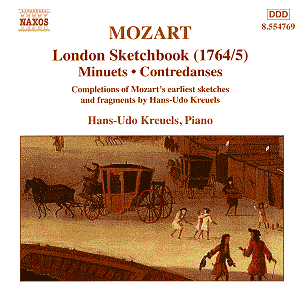


- Allegretto, K15a
- Contredanse, K15b
- Minuet, K15c
- Rondino, K15d
- Ecossaise, K15e
- Minuet, K15f
- Fantasia (Prelude), K15g
- Contredanse, K15h
- Minuet Ė Minore, K15i-k
- Vivace (Contredanse), K15l
- Minuet, K15m
- Andante, K15n
- Andante, K15o
- Allegro assai (Sonata), K15p
- Andante con espressione, K15q
- Allegro giusto, K15r
- Hornpipe (Anglaise), K15s
- Allegro (Sonata), K15t
- Larghetto (Siciliano), K15u
- Allegro molto (Finale), K15v
- Allegretto, K15w
- Allegro (Sinfonia), K15x
- Minuet, K15y
- Allegro non tanto (Gigue), K15z
- Allegro, K15aa
- Allegro con spirito (Finale?), K15bb
- Allegro moderato (Concertino), K15cc
- Andante poco adagio, K15dd *
- Minuet I and II, K15ee-ff
- Vivace (Cotillon), K15gg
- Poco allegro (Rondo), K15hh
- Andante (Air), K15ii
- Andante, K15kk
- Presto, K15ll
- Adagio, K15mm
- Tempo di Minuetto (German Dance), K15oo
- Poco maestoso (Minuet-Trio), K15pp-qq
- Minuet (Fragment Ė completed by Hans-Udo Kreuels), K15rr
- Fuga (Fragment Ė completed by Hans-Udo Kreuels), K15ss *
Vorarlberg Conservatory Ensemble*
Recorded at Osterreichischer Rundfunk, Vorarlberg, Dornbirn, Austria, December 2001
BUY NOW